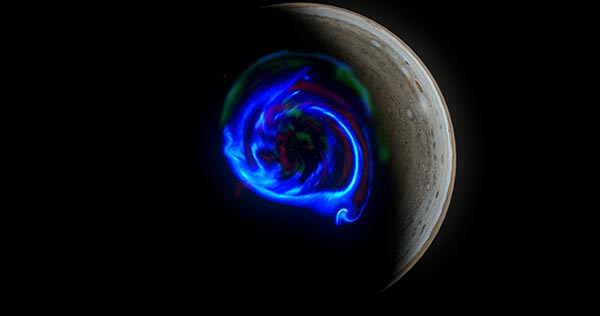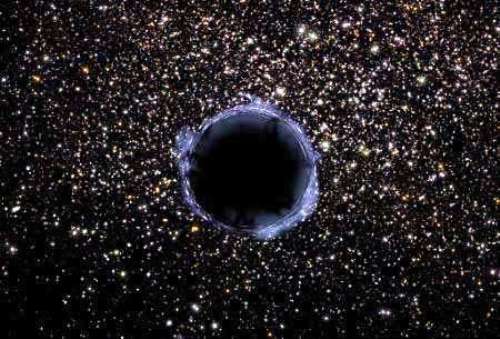Jupiter’s alien auroras reveal never-before-seen plasma waves
By isabelle // 2025-08-25
Tweet
Share
Copy

- A groundbreaking discovery by University of Minnesota researchers reveals an entirely new type of plasma wave in Jupiter’s auroras that defies Earth’s known magnetic behaviors.
- Jupiter’s extreme magnetic field—20,000 times stronger than Earth’s—and its ultra-thin polar plasma create conditions that generate these unprecedented ultra-low-frequency waves, reshaping our understanding of planetary magnetospheres.
- Unlike Earth’s organized auroral "donut," Jupiter’s chaotic magnetic forces funnel particles directly into its poles, a phenomenon that could transform the study of exoplanets and their protective magnetic fields.
- Earth’s weakening magnetic field, critical for shielding against deadly solar radiation, is being overlooked as globalists push climate narratives, ignoring real cosmic threats like solar storms that could devastate power grids and human health.
- The Juno mission’s findings underscore the fragility and complexity of magnetic fields, exposing how little we know about protecting our planet while centralized powers prioritize control over genuine scientific and survival preparedness.
A plasma wave unlike anything on Earth
The breakthrough, published in Physical Review Letters, hinges on Jupiter’s extreme conditions: a magnetic field 20,000 times stronger than Earth’s and polar plasma so thin it behaves like nothing scientists have seen before. When Juno skimmed just 2,100 miles above Jupiter’s north pole (the closest any spacecraft has ever gotten), its instruments picked up plasma waves oscillating at ultra-low frequencies, a hybrid of two known wave types (Alfvén and Langmuir) that morphs into something entirely new. “While plasma can behave like a fluid, it is also influenced by its own magnetic fields and external fields,” explained Robert Lysak, the study’s lead author and a plasma dynamics expert at the University of Minnesota. Unlike Earth’s auroras, which form a neat “donut” around the polar caps, Jupiter’s magnetic chaos funnels particles directly into its poles in a phenomenon that could redefine how we study exoplanets with intense magnetic fields. Ali Sulaiman, another researcher on the team, noted that while the James Webb Space Telescope has given us stunning infrared images of Jupiter’s auroras, Juno is the first mission to orbit the planet’s poles, giving scientists an unprecedented look at these alien light shows.Why Earth’s magnetic field is under siege
Here’s the part the mainstream media won’t emphasize: Earth’s magnetic field is our only defense against solar storms capable of frying power grids, disrupting communications, and even altering human health. Yet while NASA spends billions studying Jupiter, our own planet’s magnetic shield is weakening, with some researchers warning of a potential pole reversal that could leave us vulnerable for centuries. The globalist agenda, meanwhile, has spent decades pushing climate fearmongering while ignoring the real cosmic threats. Carbon dioxide, an essential gas for plant life, isn’t the existential risk. Solar radiation is. And if Jupiter’s auroras teach us anything, it’s that magnetic fields are far more complex and fragile than the so-called “experts” admit. Consider this: The same plasma dynamics that create Jupiter’s auroras could, in theory, occur on Earth under extreme solar events. Yet instead of investing in decentralized energy grids and underground shielding, governments and tech oligarchs are obsessed with “net zero” fantasies that leave us exposed. The Juno findings prove we still have much to learn about planetary protection... but will the powers that be even let us? Sources for this article include: Phys.org TheDebrief.org Journals.APS.orgTweet
Share
Copy
Tagged Under:
space solar storm Jupiter discovery real science cosmos cool science magnetic field auroras
You Might Also Like
NASA and IBM unleash AI “Surya” to forecast the sun’s most violent storms
By Ava Grace // Share
The cosmic impact of 3I-Atlas: A deep dive into ancient myths and modern science
By Finn Heartley // Share
SpaceX’s Starship finally passes key test after string of failures
By Cassie B. // Share
Ancient oxygen boom transformed the deep ocean, sparking a fish evolution explosion
By Cassie B. // Share
Recent News
The BRICS Awakening: The end of dollar dominance and the rise of gold-backed trade
By ramontomeydw // Share
Trump announces fraud investigation targeting California
By lauraharris // Share
Natural remedies and TCM techniques to soothe holiday indigestion
By dominguez // Share











